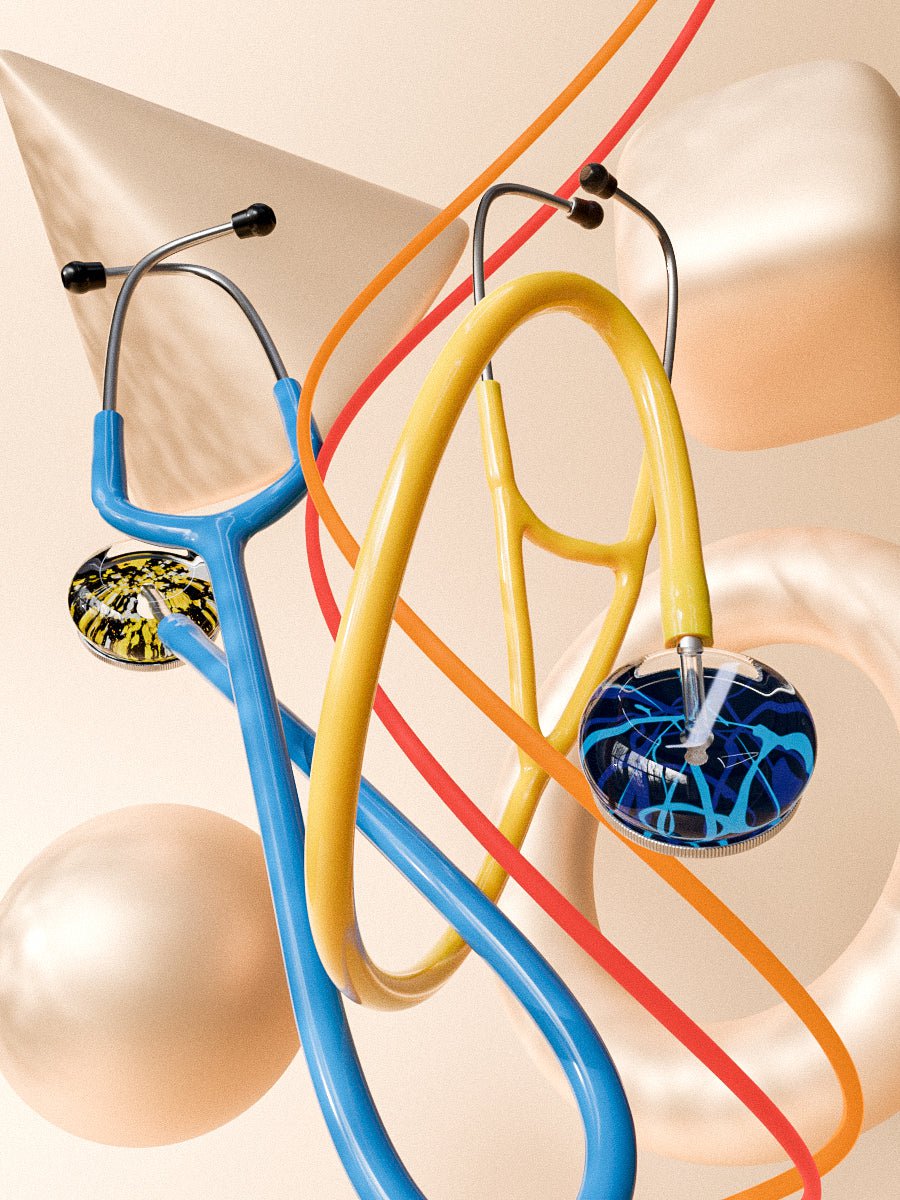A medical expert does auscultation to disabuse specific pathological conditions. Unfortunately, the presence of symptoms could prove that the disease is present. If you're looking for the best stethoscope for veterinarians, as well as other medical professionals, you've come to the right place.
What Does Auscultation Evaluate?
Auscultation is a relatively intensive yet non-invasive process that focuses on specific elements. Some of the things it considers will often include the following.
Intensity
The sound intensity will often depend on the blood flow. With excessive blood flow, the intensity is likely to be much higher. The loudness of the sound is usually measured in decibels, and it differs depending on your health.
Frequency
Frequency is the number of sound waves, or your vibrations, per second. Anything outside the norm shows that there is a problem. Remember, this frequency depends on the number of wavelengths per second.
Duration
The duration of the sound produced will also matter. A healthy person should not have too extended a sound duration.
Quality
You could also refer to it as the timbre of the sound waves. Various frequencies make up a sound, and these frequencies determine the sound pitch. This procedure helps differentiate between which quality is healthy and which one is not.
Number
The body produces many sounds. However, the number of sounds produced at once could indicate whether or not you are healthy.
The Procedure
As mentioned, this process is non-invasive and straightforward. Usually, an expert will ask you to follow the following steps:
- You will have to disrobe, allowing the stethoscope to get placed on your bare chest
- Remain in an upright and relaxed position
- Breathe in much more in-depth than normal
- The stethoscope helps check all critical points of the body and lobes, including the anterior, posterior, and lateral
- Check the amplitude, quality, duration, intensity, and duration of the sounds.
Why Auscultation Uses a Stethoscope
A stethoscope is the most reliable device to use when listening to the internal body's sound, whether it is the lungs, intestines, or heart. This device comes with a bell and a diaphragm. While the bell listens to lower-pitched sounds, the diaphragm helps detect higher-pitched sounds. The disc and tube on the stethoscope will help amplify the sounds inside the body.
Notably, you can get a customized stethoscope. It comes in handy if you intend to use it at home. While they function as standard devices, personalized stethoscopes allow you to enjoy a sense of ownership. It becomes a relatively more trustable option.
Body Parts that Auscultation Checks
Auscultation focuses on specific body parts. Here are a few insights into what this procedure checks.
Lungs
Auscultation helps determine how healthy your lungs are. It compares the airflow sounds in the back and front parts of the chest. Some of the things to watch out for are wheezes, rhonchi, and pleural rubs.
Wheezes happen when there is airflow through collapsed airways. They are continuous, high-pitched, and hissing. They could either be monophonic or polyphonic. Monophonic wheezes occur in one airway. On the other hand, polyphonic wheezes happen in many.
Crackles are the most common abnormal sounds in the lungs. These sounds result from excessive fluid in the airways. Well, the problem arises from exudate or transudate. That means the problem could be due to lung infection or congestive heart failure, respectively.
Pleural rubs are creaking sounds, and they happen when the pleural surface is inflamed. They occur during both expiratory and inspiratory stages. They could be continuous or discontinuous.
You could also experience rhonchi, which are obstructions in the bronchial airways. These sounds are low-pitched, continuous, and they happen during inhalation and exhalation. They are relatively common among patients with pneumonia.
There is also the vesicular sound, which is low-pitched and normal. Bronchial, tracheal, and bronchovesicular sounds could even happen.
Heart
There is no denying that the heart is the most crucial organ in the human body. Its health is a priority, and any abnormal sound needs to be addressed on time. Usually, auscultation helps identify the sounds produced by the valve cusps, which snap at each diastole's end. Three critical sounds often indicate that there is a problem with your heart. They are mitral valve prolapse, aortic stenosis, and pulmonary stenosis.
Mitral valve prolapse happens when the papillary valves and the chordae fail to maintain the tension they need during late systole.
Aortic stenosis usually shows that there is a physiological problem. It comes from abnormal flow of blood because of a damaged or ruptured blood vessel. Usually, it comes in the form of a murmur.
Pulmonary stenosis is relatively similar to aortic stenosis, with the difference being it happens in the right ventricle.
Abdomen
The abdomen often produces different sounds, depending on how healthy you are. Usually, auscultation comes in handy in identifying your bowel sounds. These sounds could be in the form of swishes or gurgles. The sounds tell medical experts what is happening in the intestines, allowing them to make informed decisions about the patient's health.
Alternatives to Auscultation
You could also consider different options instead of auscultation. Here are some of its alternatives.
Percussion
This process involves a doctor tapping their fingers on the part of your abdomen. This process helps the doctor listen to the sounds produced by the organs under the skin. Usually, it comes in handy in identifying enlarged hearts or excessive fluids around the heart.
Palpation
This procedure entails the doctor placing their finger over one of your arteries. It helps measure the systolic pressure, determining the health of your heart.
Some final thoughts
In conclusion, auscultation is a procedure whose benefits you cannot overlook. It provides insights into how healthy your internal body organs are. It also ensures that you understand whether you should seek medical attention. Typically, with a good stethoscope, this procedure will be easy for you.





